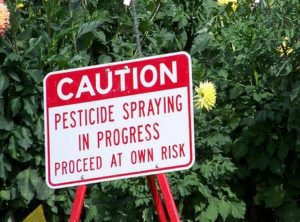Apr 11, 2023California pesticide report shows declining use
The California Department of Pesticide Regulation (DPR) has released its annual Pesticide Use Report for 2021 which confirmed preliminary data that showed a more than 10% statewide decline in pesticide use compared to the prior year.
In 2021, 191 million pounds of active ingredients — the chemicals that make pesticides work — were applied in California, and 95 million acres were treated. That was a decrease of 24.8 million pounds, and 10.9 million acres, compared to 2020, according to the Pesticide Use Report for 2021.
 Pesticides classified as cholinesterase inhibitors, which can damage the nervous system, and those classified as groundwater contaminants saw the biggest percentage declines. Other high-risk pesticide declines included those classified as carcinogens, biopesticides, toxic air contaminants and fumigants.
Pesticides classified as cholinesterase inhibitors, which can damage the nervous system, and those classified as groundwater contaminants saw the biggest percentage declines. Other high-risk pesticide declines included those classified as carcinogens, biopesticides, toxic air contaminants and fumigants.
Declining use of the higher-risk pesticides is a longer-term trend. Since 2012, the use of pesticides classified as groundwater contaminants has declined by 81%, reproductive toxins by 58%, cholinesterase inhibitors by 40%, toxic air contaminants by 22%, fumigants by 18% and carcinogens by 17%, the report shows.
Notably, lower risk biopesticide and horticultural oil use increased during the ten-year timeframe.
“We applaud growers and others for moving to safer, more sustainable pest management alternatives, including oils and biopesticides, while decreasing overall pesticide use in the last decade,” DPR Director Julie Henderson said in a news release. “We will continue to support grants, funding and other opportunities to expand access to alternatives and decrease the use of higher-risk pesticides to accelerate the adoption of sustainable pest management across the state.”
Earlier this year, the state joined a diverse group of leaders to unveil the Sustainable Pest Roadmap for California with the goal of eliminating the use of high-risk pesticides and adopting systemwide sustainable pest management by 2050 to better protect the health of California communities and the environment.
DPR’s Pesticide Use Reports are based on reported pesticide use for many agricultural and nonagricultural sites, including on farms, parks, managed urban landscapes, rights of ways, roadsides and structures.
For more information on pesticide use reporting and past reports, see DPR’s PUR website.
















